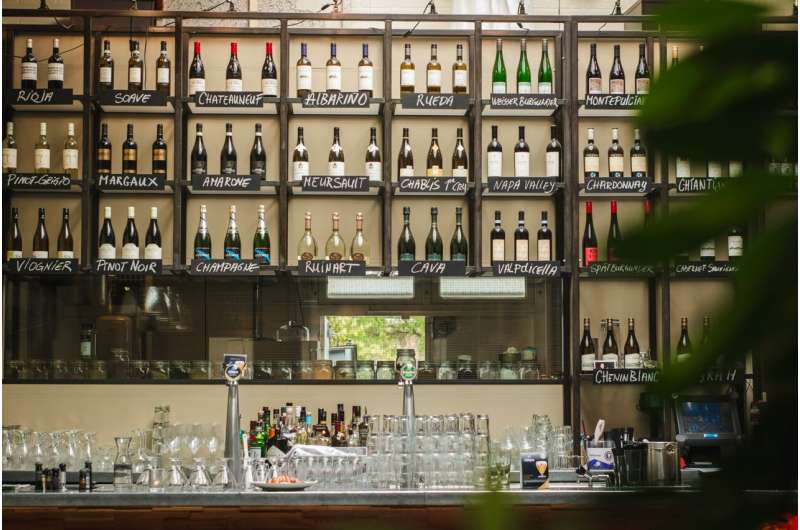Credit: Unsplash/CC0 Public Domain
Rather than a text description, using a visual sweetness scale with an arrow pointing to a specific sweetness level on wine labels may increase purchase intent among novice wine consumers, according to a new study from researchers in the Penn State School of Hospitality Management.
Even though purchase intent increased, the researchers also found those same novice consumers may not be willing to pay a higher price for wine with a sweetness scale because the scale might make the product appear to be lower quality.
This research, published in the International Journal of Contemporary Hospitality Management, was led by Donna Quadri-Felitti, Marvin Ashner Endowed Director and associate professor at the Penn State School of Hospitality Management, and Anqi Luo, who earned her doctorate in hospitality management at Penn State in 2022 and is now a research assistant professor at the Hong Kong Polytechnic University.
"The best place to describe the product's tastes to buyers is on the label when the consumer has the bottle in their hands," Quadri-Felitti said. "Our research shows the label is a small, crowded piece of real estate in which heuristics, like a visual scale, may help to close the sale on that bottle."
The researchers conducted two studies. First, they surveyed 200 adults at least 21 years old and located in the United States via Prolific, a hospitality consumer research platform, to investigate the effect that a sweetness scale had on consumers' intent to purchase.
Participants were presented with one of two versions of a label for the same wine. The first version displayed text describing the sweetness level, while the second version featured a visual scale of sweetness levels. Participants were asked to indicate their purchase intention after seeing the label and how often they consumed wine, helping determine if they were novice or experienced consumers.
The researchers then conducted a second study to gauge how sweetness scales may affect consumers' willingness to pay. In this second study, which surveyed a different group of 200 adults at least 21 years old and located in the United States via Prolific, participants were presented images of a wine label that either had a sweetness scale or a text description of sweetness. They were next asked about their willingness to pay for the product.
"Though wine novices are more likely to purchase wine with a sweetness scale rather than text, they are unwilling to pay more due to low perceived quality," Luo said. "The sweetness scale makes it easier for consumers to understand what is in the bottle. When product information is easier to interpret, it may diminish perceived exclusivity and lead to lower perceptions of value."
The researchers said wine producers should consider these findings when marketing to consumers. For example, if a producer sells high-priced wines, it could be beneficial to bypass using a visual sweetness scale on labels and instead use terminology, such as "semi-dry," on the label. On the other hand, it could be beneficial to include a sweetness scale if the target market is novices or those looking for lower-priced wine options.
Restauranteurs could use the same understanding to leverage these findings when deciding which wines to include on their wine lists, the researchers said.
"There has been an increase in competition for legal-age alcohol consumers as new products have emerged in the last decade with such drinks as alcoholic seltzers, ciders and meads," Quadri-Felitti said.
"Wine sellers seek ways to communicate the marketable attributes of their wines by multiple means in order to stimulate the trial and acceptance of their products by more consumers."
More information: Anqi (Angie) Luo et al, The double-edged effects of visualizing wine style: sweetness scale on wine label, International Journal of Contemporary Hospitality Management (2024). DOI: 10.1108/IJCHM-07-2023-1038
Provided by Pennsylvania State University
























